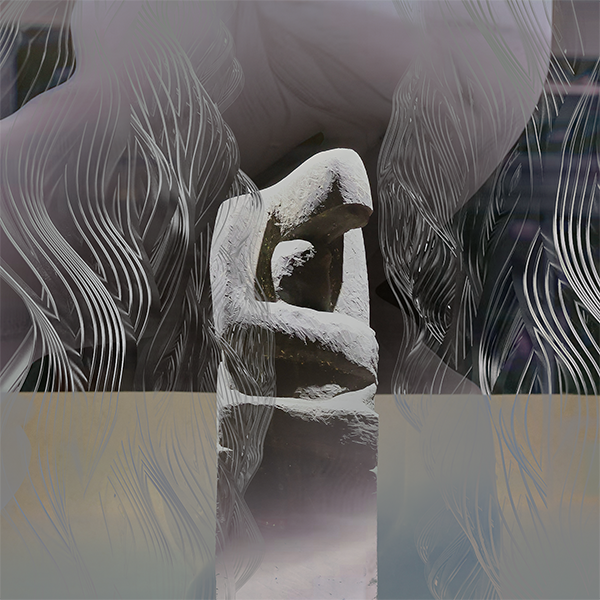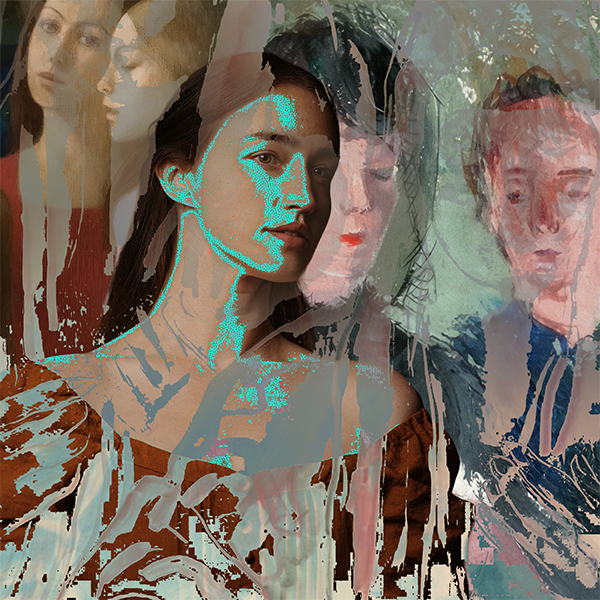Confessions of a Taiwanese-American White Supremacist in Recovery (Part 1)
When was the last time you sat in a room full of people who identified themselves as recovering white supremacists? “Hi, my name is ______, and I’m a…” Organizations don’t exactly form around this type of recovery. Why not? Because recovery begins with admitting that we have a problem, and most of us think that the only people who have a problem with white supremacism are those who are proud to be white supremacists – you know, like the KKK or the League of the South. In this 2-part series, however, I’m going to describe my own descent into and out of white supremacy and talk about what a life in recovery looks like.
Race: A Primal Frontier
On June 7th, video footage of 15-year-old Dajerria Becton getting thrown to the ground and forcefully subdued by Cpl. Eric Casebolt in McKinney, Texas set off yet another nuclear firestorm of debate in our nation about the role of race in both policing as well as how these incidents are understood, dissected, and debriefed. Ten days later, nine African-American brothers and sisters were shot to death at the historic Emanuel African Methodist Episcopal Church in Charleston, South Carolina by a self-proclaimed white supremacist. He spent an hour in prayer and Bible study with them before killing them. Since then, seven African-American churches across the South have been burned by fire, and at least three of those fires have been confirmed to be the work of arsonists. [1,2]
Yet there is somehow disagreement even about the racial significance of both the massacre and the church fires.
Our national conversation about race appears to be stuck in an exhausting and seemingly infinite loop that resembles the recycling process: wash, crush, grind, cut, rinse, and repeat. Unfortunately, no matter how fatigued or embattled we feel by polarized conversations around these events, the broader conversation about race is not going away anytime soon. It’s my conviction, therefore, that if we wish to make any progress at all, we must continue to press into the conversation rather than retreat from it. And I would like to start this conversation by telling my own story.
Beginnings
My parents emigrated to the U.S. from Taiwan in 1969 and 1971. My brother and I were born in the U.S. and grew up in a predominantly white middle-class neighborhood in Houston, Texas. At our local middle school, all the popular kids were white and preppy, so I desperately wished I could become white and preppy too, thinking that such a metamorphosis would solve my confidence issues and take away my daily, nagging sense of shame about who I was. The feeling became intense after one of the most popular white guys at the school made fun of my mom after he heard her broken English, and when, some time later, a different guy called my two best friends at the time (one Japanese-American and one Taiwanese-American) “chinks” in a denigrating tirade that ended up wounding me by proxy. The names and 13-year-old faces of those boys are permanently etched in my mind. Three years later, my brother found himself being physically and psychologically bullied on a regular basis at the same school by a white kid who targeted him for his ethnicity.
For the most part, the black kids stuck together and kept to themselves. I suspect it was to avoid getting called their version of “chink” or worse. The trend of racial self-segregation continued in high school and was replicated at my 20-year high-school reunion 4 years ago, where most of the black reunion attendees sat together in one section of the ballroom and the rest of the reunion attendees, more integrated with one another, occupied the remaining sections.
Assimilation
I became a Christian in 1991 during my freshman year of college. After that, for reasons that I have only recently come to understand, I chose to establish myself socially and spiritually in a conservative, upper-middle-class, majority-white, evangelical world. Over a period of nearly 20 years, I completely assimilated into this world and absorbed the predominant values, attitudes, beliefs, political persuasions, and theological views that existed within it. Although I didn’t think in these terms back then, I came to uphold whiteness and white evangelical culture in particular as the standard-bearers for just about everything – relating styles, social sensibilities, priorities, faith expressions, music, books, movies, theology, and so much more.
Meanwhile, during this two-decade season, the extent of my interactions with black Americans could be summed up this way: friendly and positive at best, sparse and superficial at worst.
Transitions
My husband, who is white, and I moved to Atlanta, GA in the summer of 2010. We visited the same type of churches that we had always been a part of – conservative, evangelical, upper-middle class, and predominantly white – but for whatever reason, in Atlanta, I found the social atmosphere at these churches very challenging to navigate as an introverted woman of color. The unrelenting difficulty eventually triggered an intense exhumation of those 7th-grade feelings of shame and rejection that I had buried so long ago. One evening, I just collapsed on the bed and sobbed while my husband, completely bewildered, held me and tried his best to understand.
In 2012, we broke out of the white evangelical world and got involved with a multiethnic, economically diverse church. For the first time in my life, I began to have regular, substantial interactions with African Americans from diverse backgrounds, as well as with blacks of other nationalities (Tanzania, Nigeria, Kenya, England), in a setting that was not predominantly white. I found it easy to make friends there, and some of those people became the dearest friends I have ever had. We had each other over for dinner, went to each other’s birthday parties, got to know each other’s kids, and confided in one another. As time went on, I became increasingly aware of my ignorance and hidden prejudices toward African Americans. While I had never had trouble seeing individual African Americans in my life as fully human, it wasn’t until I was in authentic community with African Americans in non-white settings that I became conscious of all the ways that I had embraced dehumanizing attitudes and beliefs about black people as a collective. I had wrongly believed for decades that the few black people that I interacted with in white spaces were exceptional, while the nameless and faceless black people “out there” somehow fit the negative stereotypes featured prominently and disproportionately in the evening news and in Hollywood movies. The geographic, social, and ecclesiastical segregation I had experienced for most of my life had served to create and reinforce these deeply mistaken notions.
Probably one of the most significant changes that took place in me was the debunking of my previously held critical perceptions about things I used to refer to as “race baiting” or “playing the race card.” I used to have a well-scripted diatribe involving an attitude of disgust or condescension and the use of names like Al Sharpton and Jeremiah Wright, followed by some sort of political commentary. I cringe and feel shame now when I think about some of the things I used to say because I know now that I said and believed and felt all those things out of a place of incredible ignorance and unexamined privilege.
Thanks to the grace and warmth of a loving community of people that opened up their hearts to me and allowed me to do life with them, a deep understanding of the very real, very present racial injustices that they live with on a day-to-day basis – ranging from mundane to humiliating to life-threatening in scope – has replaced those misguided perceptions. This change happened without the need for any debates or arguments about race because it happened as a result of authentic connections that were characterized by mutuality and reciprocity. This community-based mutuality and reciprocity accomplished what Habitat for Humanity projects, a medical mission trip to Nigeria, providing medical care to Hurricane Katrina refugees, Adopt-a-Family efforts at Christmastime, donating to Angel Tree, and friendly but superficial or infrequent interactions were unable to accomplish.
That’s why when I watched that video of Cpl. Casebolt throwing Dajerria to the ground and pressing his knees into her back as she cried, “Call my momma!” over and over again, I immediately thought of people I loved – moms and their daughters, single and married women – some of whom would relive their own traumatic memories through that video and have trouble sleeping that night. And when I heard about the massacre at Emanuel AME Church, followed by news about a string of mysterious fires at black churches, I immediately connected it to a long history of countless incidents in the U.S., both remote and recent, of black churches being set ablaze, bombed, terrorized, and shot up by white supremacists.
That's why I grieve, weep, lament, and feel tremendous outrage along with my black brothers and sisters when these things happen. That’s also why I find it impossible to remain silent in the face of the violence that is committed against black and brown people every day in the form of abrupt and distinct acts of violence, as well as in slow motion through biased and unjust systems, structures, and institutions.
It’s personal now.
—
In Part 2, I will discuss more in-depth some of the fundamental lessons I learned about the vastly different frameworks that exist – largely between blacks and whites – for understanding the nature of racism, and I will conclude with some thoughts about how racism as an enduring institution might be dismantled, beginning with people like me.
—
References:
[1] Covert, Bryce. “After Charleston, Black Churches Targeted By Arsonists Across The South.” Think Progress, June 28, 2015. http://thinkprogress.org/justice/2015/06/28/3674915/charleston-church-fires/
[2] Kaplan, Sarah. “A historic black church burns near Charleston, the latest in a spate of fires” The Washington Post, June 30, 2015. http://www.washingtonpost.com/news/morning-mix/wp/2015/06/30/fire-crews-battling-a-blaze-at-historic-black-church-near-charleston/



